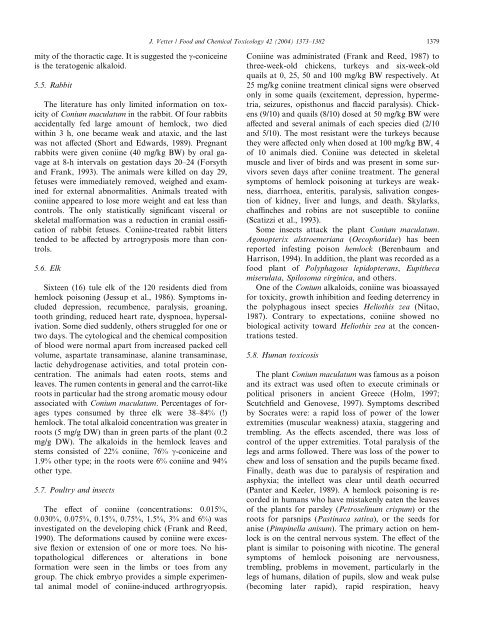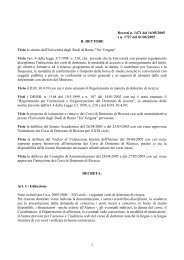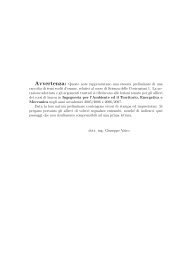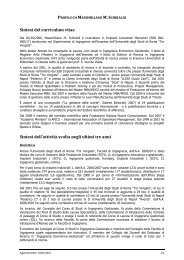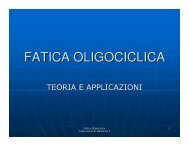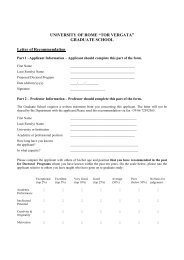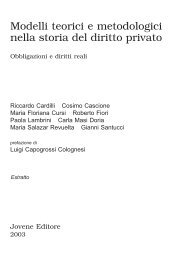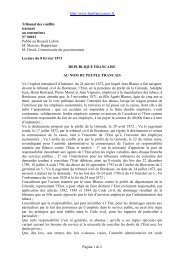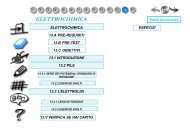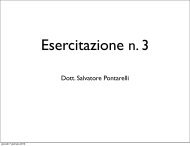You also want an ePaper? Increase the reach of your titles
YUMPU automatically turns print PDFs into web optimized ePapers that Google loves.
mity of the thoractic cage. It is suggested the c-coniceine<br />
is the teratogenic alkaloid.<br />
5.5. Rabbit<br />
The literature has only limited information on toxicity<br />
of <strong>Conium</strong> <strong>maculatum</strong> in the rabbit. Of four rabbits<br />
accidentally fed large amount of <strong>hemlock</strong>, two died<br />
within 3 h, one became weak and ataxic, and the last<br />
was not affected (Short and Edwards, 1989). Pregnant<br />
rabbits were given coniine (40 mg/kg BW) by oral gavage<br />
at 8-h intervals on gestation days 20–24 (Forsyth<br />
and Frank, 1993). The animals were killed on day 29,<br />
fetuses were immediately removed, weighed and examined<br />
for external abnormalities. Animals treated with<br />
coniine appeared to lose more weight and eat less than<br />
controls. The only statistically significant visceral or<br />
skeletal malformation was a reduction in cranial ossification<br />
of rabbit fetuses. Coniine-treated rabbit litters<br />
tended to be affected by artrogryposis more than controls.<br />
5.6. Elk<br />
Sixteen (16) tule elk of the 120 residents died from<br />
<strong>hemlock</strong> poisoning (Jessup et al., 1986). Symptoms included<br />
depression, recumbence, paralysis, groaning,<br />
tooth grinding, reduced heart rate, dyspnoea, hypersalivation.<br />
Some died suddenly, others struggled for one or<br />
two days. The cytological and the chemical composition<br />
of blood were normal apart from increased packed cell<br />
volume, aspartate transaminase, alanine transaminase,<br />
lactic dehydrogenase activities, and total protein concentration.<br />
The animals had eaten roots, stems and<br />
leaves. The rumen contents in general and the carrot-like<br />
roots in particular had the strong aromatic mousy odour<br />
associated with <strong>Conium</strong> <strong>maculatum</strong>. Percentages of forages<br />
types consumed by three elk were 38–84% (!)<br />
<strong>hemlock</strong>. The total alkaloid concentration was greater in<br />
roots (5 mg/g DW) than in green parts of the plant (0.2<br />
mg/g DW). The alkaloids in the <strong>hemlock</strong> leaves and<br />
stems consisted of 22% coniine, 76% c-coniceine and<br />
1.9% other type; in the roots were 6% coniine and 94%<br />
other type.<br />
5.7. Poultry and insects<br />
The effect of coniine (concentrations: 0.015%,<br />
0.030%, 0.075%, 0.15%, 0.75%, 1.5%, 3% and 6%) was<br />
investigated on the developing chick (Frank and Reed,<br />
1990). The deformations caused by coniine were excessive<br />
flexion or extension of one or more toes. No histopathological<br />
differences or alterations in bone<br />
formation were seen in the limbs or toes from any<br />
group. The chick embryo provides a simple experimental<br />
animal model of coniine-induced arthrogryopsis.<br />
J. Vetter / Food and Chemical Toxicology 42 (2004) 1373–1382 1379<br />
Coniine was administrated (Frank and Reed, 1987) to<br />
three-week-old chickens, turkeys and six-week-old<br />
quails at 0, 25, 50 and 100 mg/kg BW respectively. At<br />
25 mg/kg coniine treatment clinical signs were observed<br />
only in some quails (excitement, depression, hypermetria,<br />
seizures, opisthonus and flaccid paralysis). Chickens<br />
(9/10) and quails (8/10) dosed at 50 mg/kg BW were<br />
affected and several animals of each species died (2/10<br />
and 5/10). The most resistant were the turkeys because<br />
they were affected only when dosed at 100 mg/kg BW, 4<br />
of 10 animals died. Coniine was detected in skeletal<br />
muscle and liver of birds and was present in some survivors<br />
seven days after coniine treatment. The general<br />
symptoms of <strong>hemlock</strong> poisoning at turkeys are weakness,<br />
diarrhoea, enteritis, paralysis, salivation congestion<br />
of kidney, liver and lungs, and death. Skylarks,<br />
chaffinches and robins are not susceptible to coniine<br />
(Scatizzi et al., 1993).<br />
Some insects attack the plant <strong>Conium</strong> <strong>maculatum</strong>.<br />
Agonopterix alstroemeriana (Oecophoridae) has been<br />
reported infesting poison <strong>hemlock</strong> (Berenbaum and<br />
Harrison, 1994). In addition, the plant was recorded as a<br />
food plant of Polyphagous lepidopterans, Eupitheca<br />
miserulata, Spilosoma virginica, and others.<br />
One of the <strong>Conium</strong> alkaloids, coniine was bioassayed<br />
for toxicity, growth inhibition and feeding deterrency in<br />
the polyphagous insect species Heliothis zea (Nitao,<br />
1987). Contrary to expectations, coniine showed no<br />
biological activity toward Heliothis zea at the concentrations<br />
tested.<br />
5.8. Human toxicosis<br />
The plant <strong>Conium</strong> <strong>maculatum</strong> was famous as a poison<br />
and its extract was used often to execute criminals or<br />
political prisoners in ancient Greece (Holm, 1997;<br />
Scutchfield and Genovese, 1997). Symptoms described<br />
by Socrates were: a rapid loss of power of the lower<br />
extremities (muscular weakness) ataxia, staggering and<br />
trembling. As the effects ascended, there was loss of<br />
control of the upper extremities. Total paralysis of the<br />
legs and arms followed. There was loss of the power to<br />
chew and loss of sensation and the pupils became fixed.<br />
Finally, death was due to paralysis of respiration and<br />
asphyxia; the intellect was clear until death occurred<br />
(Panter and Keeler, 1989). A <strong>hemlock</strong> poisoning is recorded<br />
in humans who have mistakenly eaten the leaves<br />
of the plants for parsley (Petroselinum crispum) or the<br />
roots for parsnips (Pastinaca sativa), or the seeds for<br />
anise (Pimpinella anisum). The primary action on <strong>hemlock</strong><br />
is on the central nervous system. The effect of the<br />
plant is similar to poisoning with nicotine. The general<br />
symptoms of <strong>hemlock</strong> poisoning are nervousness,<br />
trembling, problems in movement, particularly in the<br />
legs of humans, dilation of pupils, slow and weak pulse<br />
(becoming later rapid), rapid respiration, heavy


